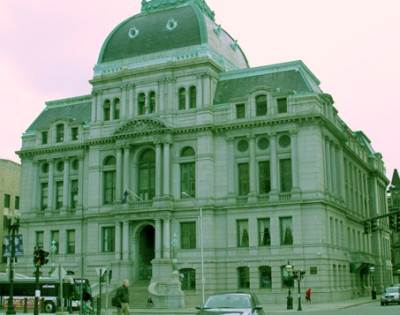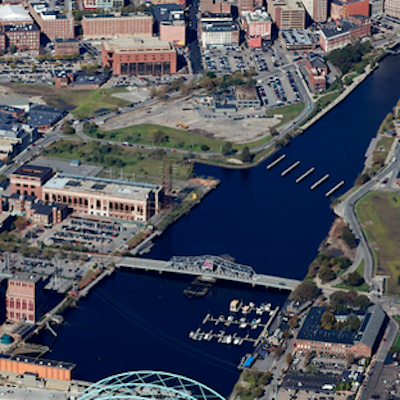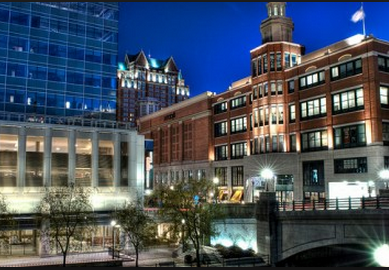Guest MINDSETTER™ Michael Fine: A Different Way to Spend $4 Million A Year For 30 Years
Tuesday, May 12, 2015
Say, just for the sake of argument, that we decided to spend $4 million a year on Neighborhood Health Stations instead of a new minor league stadium.
A Neighborhood Health Station is a new kind of health center—a place that combines the best medical care with the best ways to keep the people who live nearby healthy. A Neighborhood Health Station has an expanded team of professionals to make sure everyone in its neighborhood is and stays healthy— a team that includes social workers and psychologists, physical and occupational therapists, nurses, dentists and dental hygienists, community health workers and health coaches, home health nurses and home health aides, and paramedics and emergency medical technician. That team of people means Neighborhood Health Stations can stay open from eight in the morning to eight at night, and can be open on weekends, so that we can protect and improve the health and well-being of everyone in that neighborhood. And that team of people means that there is someone to help take care of people in the neighborhood at home should there be a need—a perfect resource for new moms and new babies, for people after surgery, and for our elders and folks with serious disabilities
And a Neighborhood Health Station also has a gym and a swimming pool, athletic trainers, and nutritionists. Neighborhood Health Stations are places where people will be able to exercise and learn how to choose and prepare healthy food.
GET THE LATEST BREAKING NEWS HERE -- SIGN UP FOR GOLOCAL FREE DAILY EBLASTIt costs $500,000 a year for three years to convert an existing community health center or a large private practice to a Neighborhood Health Station – (and more than that to build and run the gym and the pool).
But let’s make some estimates on Neighborhood Health stations without the gym and the pool, because those costs are better known.
$4 million can be used to convert eight Community Health Centers or large primary care practices to Neighborhood Health Stations, and we can repeat that process every three years, thus over 30 years we can convert 80 Community Health Centers or primary care practices to Neighborhood Health Stations.
Each Neighborhood Health Station will serve 10,000 to 15,000 people.
Eight Neighborhood Health Stations will serve 80,000 to 120,000 people
Thus, in the first three year period, we’d serve about 100,000 people or 10 percent of the state.
In order to figure out the likely impact of spending this much money on Neighborhood Health Stations, we have to make a number of assumptions, based on other models developed around the nation, and tested there. These assumption are no worse, and probably better, than the assumptions made by the proponents of a new stadium, but they are assumptions after all. There are also other ways to invest 4 million in public health that might work just as well.
But if our best guess is correct, and each Neighborhood Health Station can reduce health care spending by 10 percent or more, then the health care cost savings produced by spending $4 million is likely to be $72 million dollars, of which about $2.3 million dollars is likely to be money we are now spending on Medicaid. That calculation assumes the per person per year cost of health insurance is about $9000; that the percentage of people served by Neighborhood Health Stations with Medicaid is the same as the percentage in the general population, and that the costs of children and families with Medicaid in 2015 are about the same as they were in 2013, the last year good data was publically available. (The per-person per year cost of people children and families with Medicaid is much less than the average Medicaid cost, because Medicaid also cares for the elderly in nursing homes and the disabled, who are associated with much higher costs.)
And a similar best guess suggests spending $4 million a year on Neighborhood Health Stations could prevent 60 deaths a year from heart disease and stroke, 20 deaths a year from colon cancer, and 10 new cases of HIV during and after the first three years. And we could try to prevent as many as 23 deaths a year from drug overdoses, although it is hard to say if we’d be successful, because the science of drug overdose prevention isn’t that good yet.
If we spent $4 million a year for 30 years, we could repeat the cycle every three years, so the savings and public health improvements can be multiplied by a factor of 10. That’s $720 million dollars all together, a savings of $23 million for the General Fund, and preventing 800 unnecessary deaths. We’d have a running chance at eliminating new cases of HIV altogether, using this strategy.
Spending $4 million a year on Neighborhood Health Stations instead of a new minor league stadium for 30 years would save many more lives and many millions – or billions -- of dollars.
It can, and will, be argued that Neighborhood Health Stations are untested and unproven, but the same argument can be made for building a new minor league stadium in Providence. It is worth noting that our existing health care market is tested and proven. We’ve show over and over again that our existing health care market spends about $4 billon dollars unnecessarily in Rhode Island alone, and that we have 600 unnecessary deaths a year from heart disease and stroke, 200 unnecessary deaths a year from colon cancer, about 100 unnecessary new HIV infections a year, and 230 or more unnecessary deaths from drug overdose.
It is unclear how many deaths could be prevented by building a minor league baseball stadium, or what the real revenue impacts of such a stadium on the State General Fund might be.
We need the PawSox to stay in Rhode Island. The PawSox are part of our collective identity, part of our heart and souls. It’s not clear we actually have $4 million to spend on anything new. But if we are going to spend $4 million dollars, let’s spend that money on what can help us build a better and safer Rhode Island, and let’s look clearly at our options, and make clear sighted choices.
We are small and beautiful. Let’s be smart, small and beautiful for a change.
Related Slideshow: The Ten Biggest Questions Facing the PawSox Coming to Providence
If the new ownership of the Pawtucket Red Sox want to build a new stadium in Providence, a number of questions need to be answered. The potential for a major contruction project in the state's capitial city touches upon a number of issues, from money, to politics, to jobs, and development.
Related Articles
- RI GOP: $450 Million Spent on Convention Center Red Flag for PawSox Deal
- City Councilors Make Pitch for PawSox to Come to Worcester
- PawSox Name Flemming New Radio Play-by-Play Man
- Providence PawSox Proposal Asking For Greater Public Support
- RI Biz Winners and Flops - The PawSox Distraction
- The Ten Biggest Questions Facing the PawSox Coming to Providence
- Moore: Will PawSox Move be a Sweetheart, Insider Deal?
- Pawtucket Mayor Says PawSox Move is “Devastating”
- New Owners Don’t Rule Out Public Funding For New Providence PawSox Stadium
- Jencunas: Providence PawSox Stadium - Boon or Bust?
- David Brussat, Dr. Downtown: The Red Sox and the PawSox
- EXCLUSIVE: PawSox Consultant’s Findings in Other Cities Often Very Rosy
- PawSox Ask for More Than $100 Million in State and Local Aid
- EXCLUSIVE: New PawSox Stadium Location Emerges in Providence
- Guest MINDSETTER™ Dr. Mazze - Asking the Right Questions Now on PawSox
- Owners of Potential New PawSox Site Issue Statement As Alternative to 195 Land
- Guest MINDSETTER™ Dr. Mazze - New PawSox Stadium v. 38 Studios Lessons Unlearned
- RI GOP: Convention Center Contracts Warning Sign for PawSox Deal
- PawSox Owners Have Given Hundreds of Thousands in Political Contributions
- PawSox Consultants Overestimated URI Ryan Center Attendance by Millions
- NEW: Bill Introduced to Require Voter Approval for PawSox Stadium Deal
- Guest MINDSETTER™ John Loughlin: PawSox in Providence – A Counter Offer
- Moore: A Preposterous PawSox Proposal













